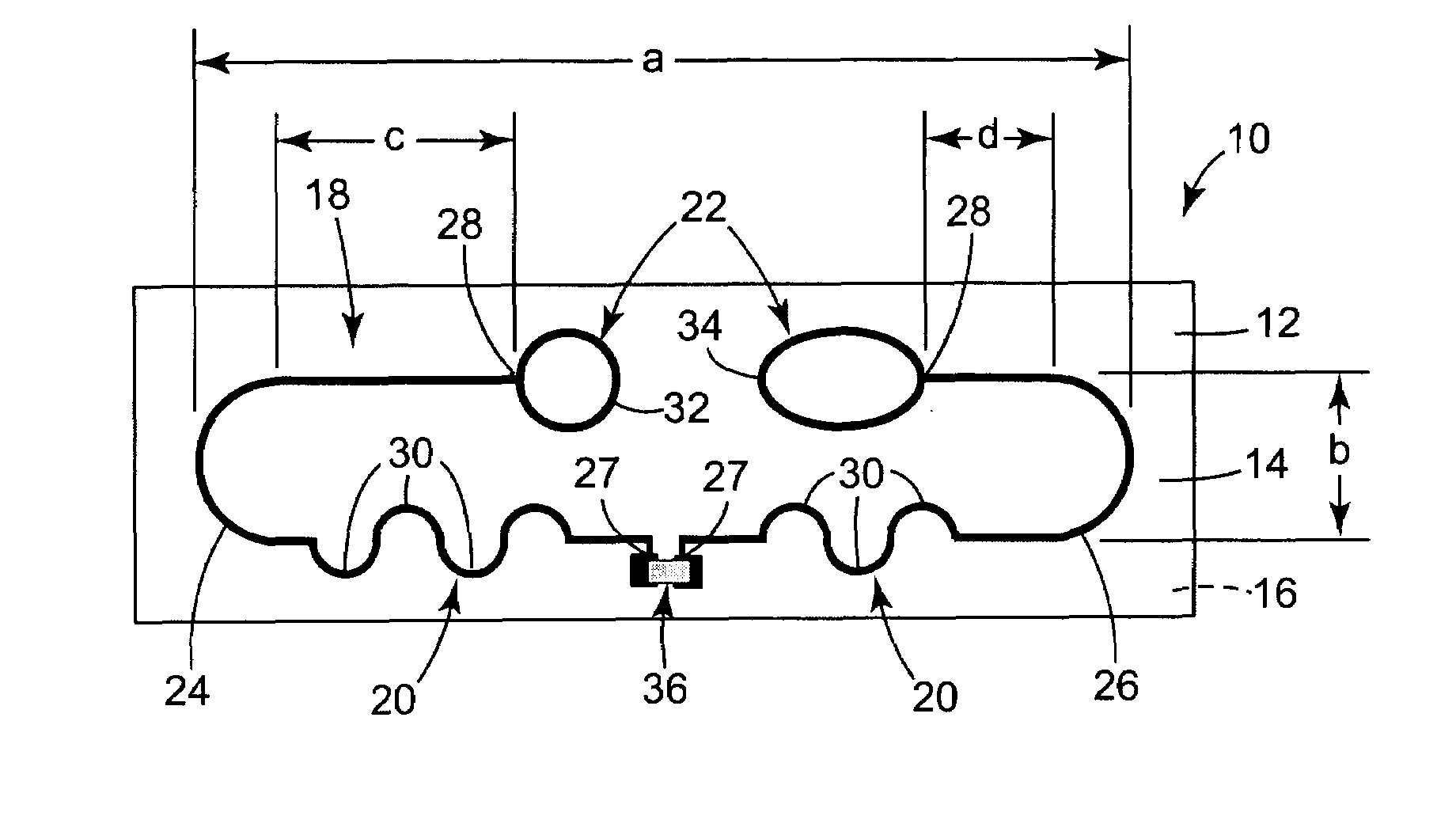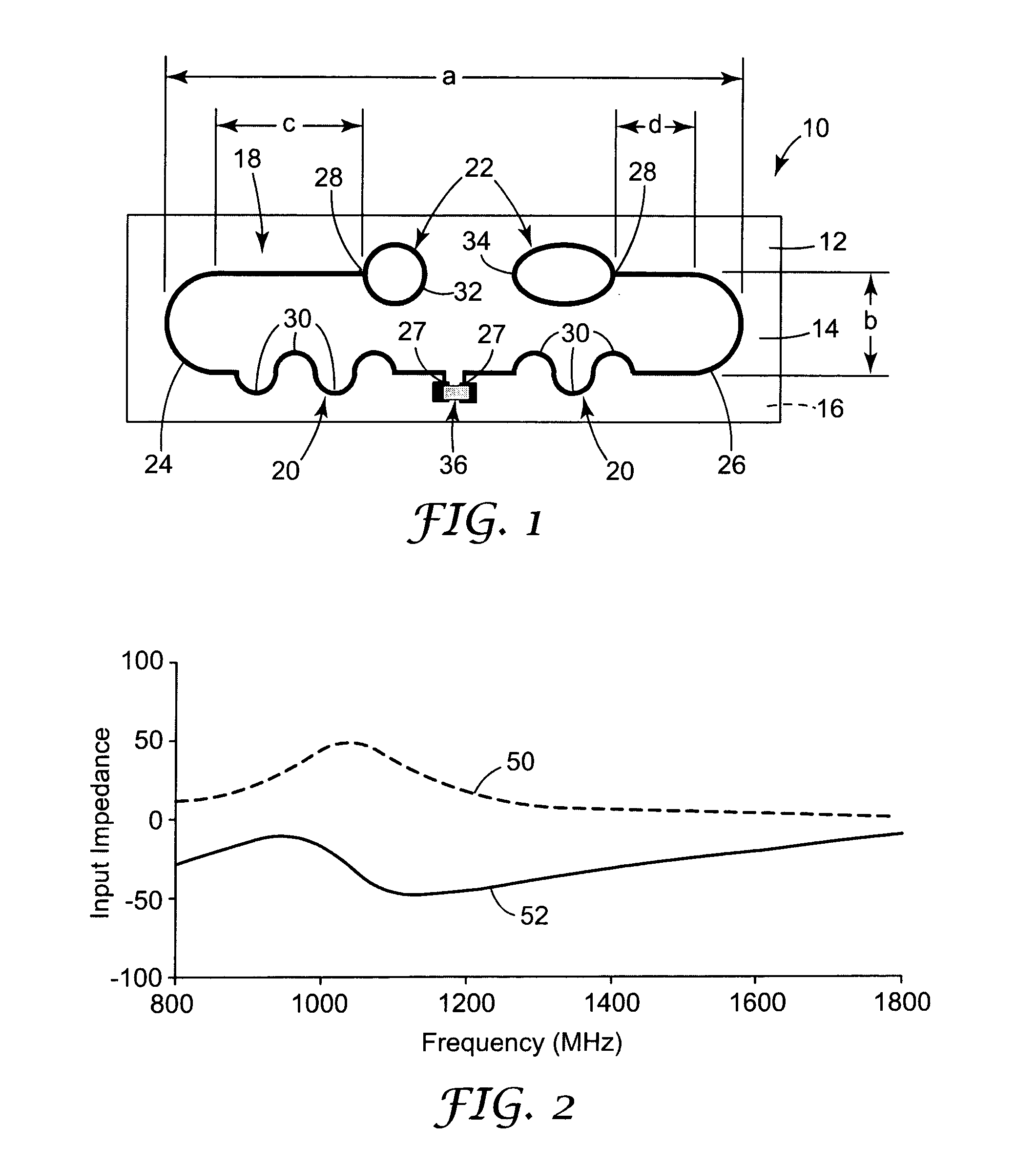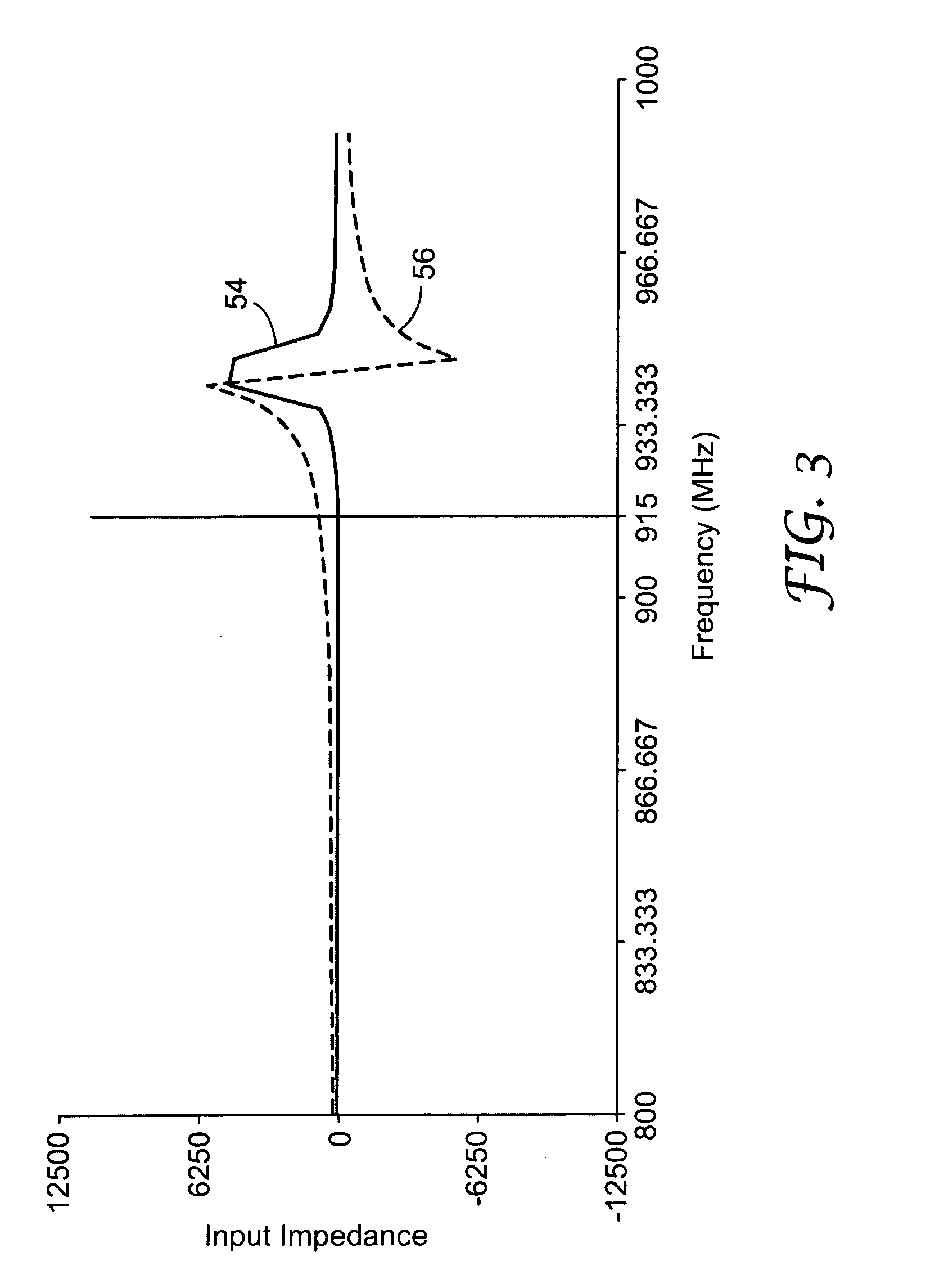Ultra high frequency radio frequency identification tag
a radio frequency identification and ultra high frequency technology, applied in the structural form of resonant antennas, instruments, radiating elements, etc., can solve the problems of low efficiency of electrical signal absorbed by antennas to couple to integrated circuits, low power transfer, non-uniform thickness,
- Summary
- Abstract
- Description
- Claims
- Application Information
AI Technical Summary
Benefits of technology
Problems solved by technology
Method used
Image
Examples
examples
[0047]One preferred embodiment of the RFID tag 10 of the present invention was made, as illustrated in FIG. 1. The dimensions of the antenna 18 are illustrated in FIG. 1, and the antenna of this example included an “a” distance of 140 mm and a “b” distance of 10 mm. A comparative example of a prior art folded dipole antenna was also made.
[0048]The antenna 18 was made by plating 0.118 mm thickness copper on a 0.025 mm thick polyimide substrate 12 commercially available from Dupont Electronics, based in Wilmington, Del., under the trade name Kapton E film. Photoresist material commercially available from MacDermid, Inc, based in Wilmington, Del. under trade name MacDermid SF 320 was laminated to the surface of the plated copper film. The photoresist material was applied to the substrate, in the form of the desired final antenna 18.
[0049]The exposed copper was etched away, leaving copper in the pattern of the desired final antenna 18. The remaining photoresist material was stripped off...
PUM
 Login to View More
Login to View More Abstract
Description
Claims
Application Information
 Login to View More
Login to View More - R&D
- Intellectual Property
- Life Sciences
- Materials
- Tech Scout
- Unparalleled Data Quality
- Higher Quality Content
- 60% Fewer Hallucinations
Browse by: Latest US Patents, China's latest patents, Technical Efficacy Thesaurus, Application Domain, Technology Topic, Popular Technical Reports.
© 2025 PatSnap. All rights reserved.Legal|Privacy policy|Modern Slavery Act Transparency Statement|Sitemap|About US| Contact US: help@patsnap.com



